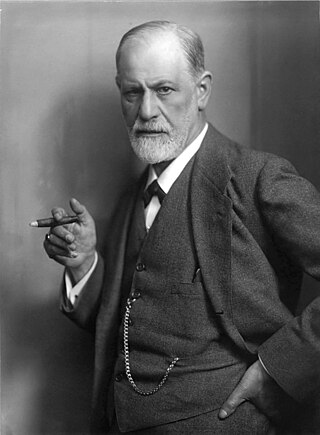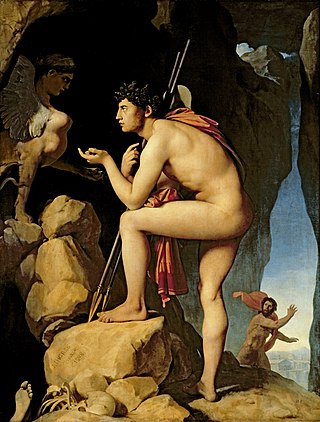Psychoanalysis is a theory developed by Sigmund Freud. It describes the human soul as an apparatus that emerged along the path of evolution and consists mainly of three parts that complement each other in a similar way to the organelles: a set of innate needs, a consciousness that serves to satisfy them, and a memory for the retrievable storage of experiences during made. Further in, it includes insights into the effects of traumatic education and a technique for bringing repressed content back into the realm of consciousness, in particular the diagnostic interpretation of dreams. Overall, psychoanalysis represents a method for the treatment of mental disorders.

Sigmund Freud was an Austrian neurologist and the founder of psychoanalysis, a clinical method for evaluating and treating pathologies seen as originating from conflicts in the psyche, through dialogue between patient and psychoanalyst, and the distinctive theory of mind and human agency derived from it.
In psychoanalysis and other psychological theories, the unconscious mind is the part of the psyche that is not available to introspection. Although these processes exist beneath the surface of conscious awareness, they are thought to exert an effect on conscious thought processes and behavior. Empirical evidence suggests that unconscious phenomena include repressed feelings and desires, memories, automatic skills, subliminal perceptions, and automatic reactions. The term was coined by the 18th-century German Romantic philosopher Friedrich Schelling and later introduced into English by the poet and essayist Samuel Taylor Coleridge.
In psychoanalytic theory the “id, the ego and the superego” are three different, interacting agents in the psychic apparatus as Sigmund Freud summarized and defined it in his structural model of the psyche. He developed these three terms to describe the basic structure and various phenomena of mental life as they were encountered in psychoanalytic practice. Freud himself used the German terms das Es, Ich, and Über-Ich, which literally translate as "the it", "I", and "over-I". The Latin terms id, ego and superego were chosen by his original translators and have remained in use.
Psychoanalytic theory is the theory of personality organization and the dynamics of personality development relating to the practice of psychoanalysis, a clinical method for treating psychopathology. First laid out by Sigmund Freud in the late 19th century, psychoanalytic theory has undergone many refinements since his work. The psychoanalytic theory came to full prominence in the last third of the twentieth century as part of the flow of critical discourse regarding psychological treatments after the 1960s, long after Freud's death in 1939. Freud had ceased his analysis of the brain and his physiological studies and shifted his focus to the study of the psyche, and on treatment using free association and the phenomena of transference. His study emphasized the recognition of childhood events that could influence the mental functioning of adults. His examination of the genetic and then the developmental aspects gave the psychoanalytic theory its characteristics.
In psychoanalysis, a Freudian slip, also called parapraxis, is an error in speech, memory, or physical action that occurs due to the interference of an unconscious subdued wish or internal train of thought. Classical examples involve slips of the tongue, but psychoanalytic theory also embraces misreadings, mishearings, mistypings, temporary forgettings, and the mislaying and losing of objects.

Civilization and Its Discontents is a book by Sigmund Freud, the founder of psychoanalysis. It was written in 1929 and first published in German in 1930 as Das Unbehagen in der Kultur.

In psychology, sublimation is a mature type of defense mechanism, in which socially unacceptable impulses or idealizations are transformed into socially acceptable actions or behavior, possibly resulting in a long-term conversion of the initial impulse.
The genital stage in psychoanalysis is the term used by Sigmund Freud to describe the final stage of human psychosexual development. The individual develops a strong sexual interest in people outside of the family.
In psychoanalysis, cathexis is defined as the process of allocation of mental or emotional energy to a person, object, or idea.
In psychology, the subconscious is the part of the mind that is not currently of focal awareness.
In Freudian psychoanalysis, the pleasure principle is the instinctive seeking of pleasure and avoiding of pain to satisfy biological and psychological needs. Specifically, the pleasure principle is the animating force behind the id.
In classical Freudian psychoanalytic theory, the death drive is the drive toward death and destruction, often expressed through behaviors such as aggression, repetition compulsion, and self-destructiveness. It was originally proposed by Sabina Spielrein in her paper "Destruction as the Cause of Coming Into Being" in 1912, which was then taken up by Sigmund Freud in 1920 in Beyond the Pleasure Principle. This concept has been translated as "opposition between the ego or death instincts and the sexual or life instincts". In Beyond thePleasure Principle, Freud used the plural "death drives" (Todestriebe) much more frequently than the singular.

Psychodynamics, also known as psychodynamic psychology, in its broadest sense, is an approach to psychology that emphasizes systematic study of the psychological forces underlying human behavior, feelings, and emotions and how they might relate to early experience. It is especially interested in the dynamic relations between conscious motivation and unconscious motivation.
In psychoanalysis, preconscious is the loci preceding consciousness. Thoughts are preconscious when they are unconscious at a particular moment, but are not repressed. Therefore, preconscious thoughts are available for recall and easily 'capable of becoming conscious'—a phrase attributed by Sigmund Freud to Josef Breuer.

In Freudian psychoanalysis, the ego ideal is the inner image of oneself as one wants to become. It consists of "the individual's conscious and unconscious images of what he would like to be, patterned after certain people whom ... he regards as ideal."

Metapsychology is that aspect of a psychological theory that discusses the terms that are essential to it, but leaves aside or transcends the phenomena that the theory deals with. Psychology refers to the concrete conditions of the human psyche, metapsychology to psychology itself.

In classical psychoanalytic theory, the Oedipus complex refers to a son's sexual attitude towards his mother and concomitant hostility toward his father, first formed during the phallic stage of psychosexual development. A daughter's attitude of desire for her father and hostility toward her mother is referred to as the feminine Oedipus complex. The general concept was considered by Sigmund Freud in The Interpretation of Dreams (1899), although the term itself was introduced in his paper A Special Type of Choice of Object made by Men (1910).
Content in Freudian dream analysis refers to two closely connected aspects of the dream: the manifest content, and the latent content. Impulses and drives residing in the unconscious press toward consciousness during sleep, but are only able to evade the censorship mechanism of repression by associating themselves with words, ideas and images that are acceptable to consciousness. Thus the dream as consciously remembered upon waking is interpreted in psychoanalysis as a disguised or distorted representation of repressed desires.

Sigmund Freud is considered to be the founder of the psychodynamic approach to psychology, which looks to unconscious drives to explain human behavior. Freud believed that the mind is responsible for both conscious and unconscious decisions that it makes on the basis of psychological drives. The id, ego, and super-ego are three aspects of the mind Freud believed to comprise a person's personality. Freud believed people are "simply actors in the drama of [their] own minds, pushed by desire, pulled by coincidence. Underneath the surface, our personalities represent the power struggle going on deep within us".








